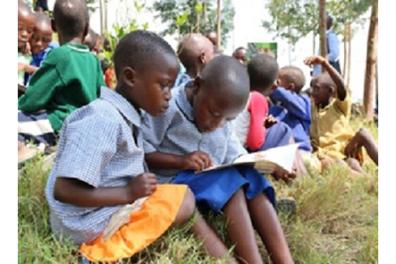African literature in European and African languages

One of the characteristics of literary production on the African continent is the coexistence of literatures written in formerly colonial European languages, and oral and written literatures in African languages.
.
However, publishing and reception is often limited to literatures written in European languages. Analysis from this perspective is based on a lack of knowledge of cultural realities. In order to understand the continent's literatures, their methodological and theoretical approach must respect common defining criteria: language - African or not; and mode of communication - orality or scripturality.
.
Literary systems
These two observable criteria, as attested in all literary production, define "literary systems". We thus distinguish:
(1) oral literatures in African languages; (2) literatures written in African languages, using several writing systems; (3) literatures written in European languages.
The concept of "literary systems" (U. Baumgardt, 2008) opens up new perspectives. This approach takes literary productions into account within a common framework; describes them in their respective functions and then defines their cultural specificities, before comparing them.
Without such precautions, critics run the risk of resorting to hasty comparisons, leading to judgments such as: oral literature "has no writing"; literature in African languages "has a very limited audience". By writing in an African language, authors "do not reach an international audience".
This reading is in line with the "underdevelopment" analysis grid: literary productions remain marked by the seal of what they have "less of". Yet there is no difference in "literary value" or "cultural value" that would distinguish literatures. On the contrary, there is a fundamental difference between literary productions that pre-existed colonization, and those developed in the context of colonization or the post-colonial era.
Literatures in European languages are relatively well studied [Virginie Coulon 2005; Douglas Killam & Ruth Rowe (eds.) 2000; Mônica Rector, Vernon Richard (eds.) 2012], which is not the case for oral and written literatures in African languages.
Oral literature
Oral literatures are rich. Their diversity is based, among other things, on the number of languages involved, and expresses the cultural specificity of each of them. This does not rule out the possibility that several oral literatures in contact express a common cultural background (G. Calame-Griaule 1987, R. Finnegan 1070, U. Baumgardt and J. Derive 2008; J. Derive 2012).
Literary writing in African languages
Literatures in African languages use different spellings. Some languages develop their own script. Others adapt the Arabic alphabet, giving rise to literature written in Ajami. Like oral literature, these pre-existed colonization. On the other hand, it was in the context of colonization - English and French, to mention just two cases - that the Latin alphabet was adapted to write African languages (B. W. Andrzejewski et al. 1985; A. Gérard, A. Ricard 1995, A. Mohamdou 2005).
.
Oral and written literature in African languages
Encyclopedia of literature in African languages
(ELLAF) http://ellaf.huma-num.fr/
The ELLAF project's digital platform aims to investigate two levels: the documentation of oral and written literatures in African languages whatever their sociolinguistic status, and the development of a framework for theoretical reflection. The aim is to overcome the division between orality and scripturality, and above all to analyze the relationships between these two modes of literary expression.
The defining criteria of literary systems - language and mode of communication - underpin the specificity of each system. Indeed, they largely determine the relationship between the producer of texts and his audience, whether readers or listeners. The impact of these factors on texts, their content and forms of expression, is little studied but undeniable. The "Literary Systems in Africa" course I've been teaching for several years is based on this analysis, and verifies it in relation to literary texts attested not only in Africa, but also elsewhere.
African literatures clearly illustrate the influence of colonial domination on the cultural life of colonized peoples whose languages and literatures are minoritized. For many African countries, the transmission and teaching of their intangible heritage is not assured. Where this is the case, orality and scripturality coexist in a complementary and harmonious way.
Ursula Baumgardt
PU "Oralité et littérature africaine"
PLIDAM
Language: peul
Parcours Oralité : Licence and Master Oralité, with Frosa Bouchereau
"Encyclopedia of Literatures in African Languages" (ELLAF)
http://ellaf.huma-num.fr/
Bibliographical references
Andrzejewski Bogomit Witalis, S. Pilaszewicz and W. Tyloch, 1985, Literatures in African Languages: Theoretical Issues and Sample Surveys, Cambridge/Warsaw, Cambridge University Press/Wiedza Powszechna, 425 p.
Baumgardt Ursula, 2000, Une conteuse peule et son répertoire. Goggo Addi de Garoua (Nord Cameroun), Paris, Karthala, 548 p.
Baumgardt Ursula, 2008, "La littérature orale n'est pas un vase clos", in Ursula Baumgardt and Derive Jean, 2008, Littératures orales africaines, perspectives théoriques et méthodologiques, Paris, Karthala, pp. 245-272.
Baumgardt Ursula (dir.), 2014, Représentations de l'altérité dans la littérature orale africaine, Paris, Karthala, 309 p.
Baumgardt Ursula, 2017 (ed.), Literatures in African languages. Production et diffusion, Paris, Karthala, 361p.
Calame-Griaule Geneviève, 1987, Des cauris au marché. Essai sur les contes africains, Paris, Société des Africanistes, 293 p.
Calame-Griaule Geneviève (ed.), 1991, Le Renouveau du conte, Paris, Éditions du Cnrs, 449 p.
Coulon Virginie, 2005, Bibliographie francophone de littérature africaine (Afrique subsaharienne), Paris, EDICEF, 479 p. (2nd edition).
Derive Jean, 2012, L'Art du verbe dans l'oralité africaine, Paris, L'Harmattan, 224 p.
Finnegan Ruth, 1970, Oral Literature in Africa, Oxford, The Clarendon Press, 558 p.
Gérard Albert, 1981, African Language Literatures, Washington/London, Three Continents Press/Longman, 398 p.
Killam Douglas & Rowe Ruth (eds.), 2000, The Companion to African Literatures, Bloomington, Indiana University Press, 336 p.
Mohamadou Aliou, 2005, "Si Bamako m'était conté... À propos de la transcription et de l'orthographe du peul", in U. Baumgardt and J. Derive (eds.), Paroles nomades. Écrits d'ethnolinguistique africaine, Paris, Karthala, pp. 139-151
.
Rector Mônica, Vernon Richard (eds.), 2012, African Lusophone Writers, Detroit, Gale Cengage Learning, Bruccoli Clark Layman, 421 p.
Ricard Alain, 1995, Literatures of Black Africa. Des langues aux livres, Paris, Karthala, 300 p.